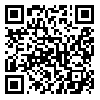Volume 28, Issue 1 (4-2022)
Back to this Issue |
Back to browse issues page
Download citation:
BibTeX | RIS | EndNote | Medlars | ProCite | Reference Manager | RefWorks
Send citation to:



BibTeX | RIS | EndNote | Medlars | ProCite | Reference Manager | RefWorks
Send citation to:
Shahsavari Y, Hosseini S H, Sayadi A R, Sadeghi T. Effect of empowerment based on the Gibson model on self-efficacy and quality of life in the mothers of children with thalassemia. Journal of Hayat 2022; 28 (1) :28-42
URL: http://hayat.tums.ac.ir/article-1-4432-en.html
URL: http://hayat.tums.ac.ir/article-1-4432-en.html
1- Dept. of Medical Surgical Nursing, School of Nursing and Midwifery, Rafsanjan University of Medical Sciences, Rafsanjan, Iran
2- Dept. of Nursing Management, School of Nursing and Midwifery, Rafsanjan University of Medical Sciences, Rafsanjan, Iran; Geriatric Care Research Center, Rafsanjan University of Medical Sciences, Rafsanjan, Iran
3- Dept. of Psychiatric Nursing, School of Nursing and Midwifery, Rafsanjan University of Medical Sciences, Rafsanjan, Iran; Social Determinants of Health Research Center, Rafsanjan University of Medical Sciences, Rafsanjan, Iran
4- Dept. of Pediatric Nursing, School of Nursing and Midwifery, Rafsanjan University of Medical Sciences, Rafsanjan, Iran; Non-Communicable Diseases Research Center, Rafsanjan University of Medical Sciences, Rafsanjan, Iran ,t.b_sadeghi@yahoo.com
2- Dept. of Nursing Management, School of Nursing and Midwifery, Rafsanjan University of Medical Sciences, Rafsanjan, Iran; Geriatric Care Research Center, Rafsanjan University of Medical Sciences, Rafsanjan, Iran
3- Dept. of Psychiatric Nursing, School of Nursing and Midwifery, Rafsanjan University of Medical Sciences, Rafsanjan, Iran; Social Determinants of Health Research Center, Rafsanjan University of Medical Sciences, Rafsanjan, Iran
4- Dept. of Pediatric Nursing, School of Nursing and Midwifery, Rafsanjan University of Medical Sciences, Rafsanjan, Iran; Non-Communicable Diseases Research Center, Rafsanjan University of Medical Sciences, Rafsanjan, Iran ,
Abstract: (1883 Views)
Background & Aim: Reduced quality of life and self-efficacy are among problems of mothers of children with chronic diseases. This study aimed to determine the effect of empowerment based on the Gibson model on self-efficacy and quality of life in the mothers of children with thalassemia.
Methods & Materials: In this quasi-experimental study, the study population were the mothers of children with thalassemia referred to rare disease clinics in Rafsanjan and Kerman in 2020. The sample size was 25. Mothers were selected by the convenience sampling method and divided into two groups. In the intervention group, mothers participated in five training sessions based on the Gibson model, and in the control group, mothers received routine care. Data collection tools included the Zhang’s self-efficacy questionnaire and the SF-36 which were completed before the intervention and six weeks after the intervention. Data were analyzed using chi-square test, independent and paired t-test via the SPSS software version 18.
Results: Before the intervention, the mean score of self-efficacy (P=0.31) and quality of life (P=0.47) were not statistically significant between the groups, but after the intervention, the mean score of self-efficacy in the intervention group (68.81±9.36) was significantly higher than that of in the control group (44.69±6.87) (P<0.001). But there was no significant difference in the mean score of quality of life between the intervention (60.64±10.08) and control (56.19±11.41) groups after the intervention (P=0.19).
Conclusion: According to the results, empowerment based on the Gibson model is an appropriate method for improving self-efficacy in the mothers of children with thalassemia. However, further studies are recommended about its effect on quality of life.
Methods & Materials: In this quasi-experimental study, the study population were the mothers of children with thalassemia referred to rare disease clinics in Rafsanjan and Kerman in 2020. The sample size was 25. Mothers were selected by the convenience sampling method and divided into two groups. In the intervention group, mothers participated in five training sessions based on the Gibson model, and in the control group, mothers received routine care. Data collection tools included the Zhang’s self-efficacy questionnaire and the SF-36 which were completed before the intervention and six weeks after the intervention. Data were analyzed using chi-square test, independent and paired t-test via the SPSS software version 18.
Results: Before the intervention, the mean score of self-efficacy (P=0.31) and quality of life (P=0.47) were not statistically significant between the groups, but after the intervention, the mean score of self-efficacy in the intervention group (68.81±9.36) was significantly higher than that of in the control group (44.69±6.87) (P<0.001). But there was no significant difference in the mean score of quality of life between the intervention (60.64±10.08) and control (56.19±11.41) groups after the intervention (P=0.19).
Conclusion: According to the results, empowerment based on the Gibson model is an appropriate method for improving self-efficacy in the mothers of children with thalassemia. However, further studies are recommended about its effect on quality of life.
Send email to the article author
| Rights and permissions | |
 |
This work is licensed under a Creative Commons Attribution-NonCommercial 4.0 International License. |






